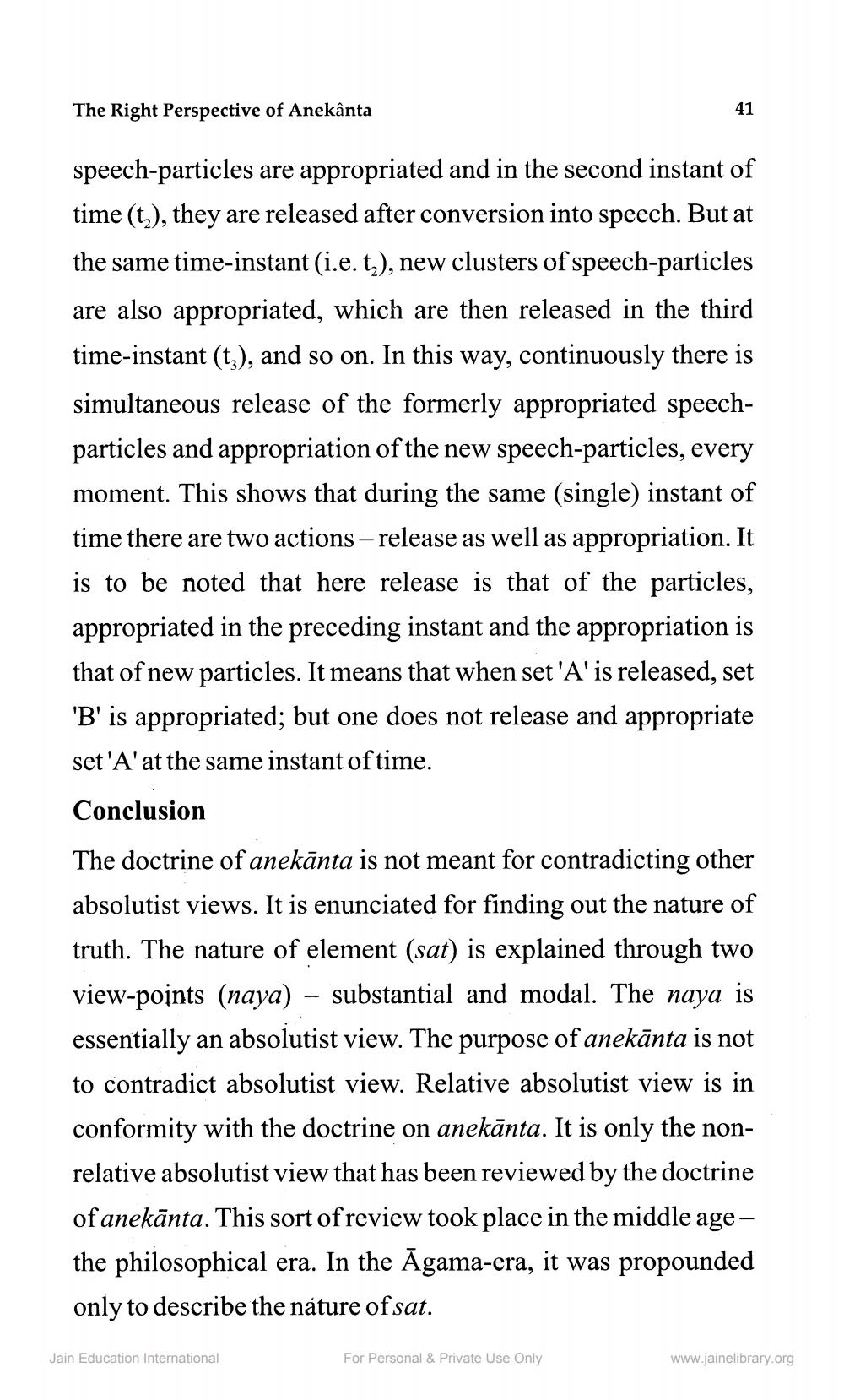________________
The Right Perspective of Anekânta
speech-particles are appropriated and in the second instant of time (ty), they are released after conversion into speech. But at the same time-instant (i.e.ty), new clusters of speech-particles are also appropriated, which are then released in the third time-instant (tz), and so on. In this way, continuously there is simultaneous release of the formerly appropriated speechparticles and appropriation of the new speech-particles, every moment. This shows that during the same (single) instant of time there are two actions - release as well as appropriation. It is to be noted that here release is that of the particles, appropriated in the preceding instant and the appropriation is that of new particles. It means that when set 'A' is released, set 'B' is appropriated; but one does not release and appropriate set 'A' at the same instant of time. Conclusion The doctrine of anekānta is not meant for contradicting other absolutist views. It is enunciated for finding out the nature of truth. The nature of element (sat) is explained through two view-points (naya) – substantial and modal. The naya is essentially an absolutist view. The purpose of anekānta is not to contradict absolutist view. Relative absolutist view is in conformity with the doctrine on anekānta. It is only the nonrelative absolutist view that has been reviewed by the doctrine of anekānta. This sort of review took place in the middle agethe philosophical era. In the Āgama-era, it was propounded only to describe the nature of sat.
Jain Education International
For Personal & Private Use Only
www.jainelibrary.org




